E-Sports
The $5.7 Trillion Marketing Shift: Why Gen Z vs Gen Alpha Strategy Splits Are Killing Campaigns
After leading $60M+ youth campaigns, Josh identifies the critical flaw killing most brands: treating Gen Z and Gen Alpha as similar demographics instead of fundamentally different strategic opportunities. This $5.7 trillion economic shift demands parallel approaches, not universal campaigns. US, June 10, 2025 — Originally posted on: https://joshweaver.com/gen-z-vs-gen-alpha-marketing-strategy/ After leading $60M+ campaigns targeting young demographics […]

After leading $60M+ youth campaigns, Josh identifies the critical flaw killing most brands: treating Gen Z and Gen Alpha as similar demographics instead of fundamentally different strategic opportunities. This $5.7 trillion economic shift demands parallel approaches, not universal campaigns.
— Originally posted on: https://joshweaver.com/gen-z-vs-gen-alpha-marketing-strategy/

After leading $60M+ campaigns targeting young demographics and watching brands waste millions on misaligned strategies, I’ve identified the critical flaw in most youth marketing: treating generational differences as minor tweaks instead of fundamental strategic pivots.
The numbers demand attention. Gen Z commands $360 billion in spending power while Gen Alpha influences $5.39 trillion in household decisions. Combined, they represent the largest economic force in consumer history. Yet 73% of brands still use identical strategies for both generations—a mistake that’s costing companies measurable revenue and long-term market position.
The Million-Dollar Misconception
Most marketers see Gen Z (ages 15-27) and Gen Alpha (ages 9-14) as adjacent demographics requiring similar approaches. This thinking reflects a fundamental misunderstanding of how digital nativity actually shapes consumer behavior.
During my tenure at The Trevor Project, we discovered that Gen Z discovers authenticity through social justice alignment and transparent brand values. Gen Alpha, however, evaluates authenticity through technological integration and personalized experiences. The difference isn’t semantic—it’s strategic.
Gen Z grew up during the digital revolution. Gen Alpha was born after it.
This distinction creates entirely different expectations for brand interaction, content consumption, and purchase influence. Research from Deloitte and Pew confirms what we’ve observed in practice: these generations require fundamentally different engagement strategies, not variations of the same approach.
Platform Preferences Reveal Strategic Divides
The clearest evidence of strategic requirements emerges through platform behavior analysis. Gen Z gravitates toward TikTok and Instagram for authentic, short-form content that aligns with social causes. They use these platforms for discovery, validation, and community building around shared values.
Gen Alpha approaches digital platforms as collaborative spaces. They prefer YouTube for educational content (51% use it for brand discovery), gaming platforms like Roblox for social interaction, and interactive experiences that allow co-creation rather than passive consumption.
Key Strategic Implication: Content that succeeds with Gen Z through authenticity and social consciousness often fails with Gen Alpha, who prioritize interactivity and personalization over messaging alignment.
The Spending Behavior Split That Changes Everything
Gen Z purchasing behavior centers on research-driven, value-conscious decisions. They investigate brands thoroughly, compare sustainable practices, and make independent choices aligned with personal values. Price transparency matters—43% want costs clearly presented in advertisements, according to consumer research.
Gen Alpha, despite financial dependence on parents, influences family purchases in categories like snacks (50%), apparel (44%), and beverages (41%). They approach spending through collaborative family decisions, gaming-influenced preferences, and technology-enhanced shopping experiences.
Critical Marketing Shift: Gen Z campaigns should target individual decision-makers with value propositions. Gen Alpha campaigns must engage family units while respecting young users’ influence on household choices. (Deep dive into spending patterns and purchase behaviors for tactical implementation.)
Technology Integration: The Authenticity Divide
The most expensive mistake I observe in youth marketing involves misunderstanding each generation’s relationship with technology and authenticity. (Read about specific campaign failures and successes from my 14 years leading youth campaigns.)
Gen Z views authenticity through brand values alignment and social responsibility demonstration. They’re suspicious of over-produced content but respond to genuine storytelling tied to meaningful causes.
Gen Alpha expects seamless technology integration as baseline functionality, not impressive innovation. They evaluate authenticity through consistent, personalized experiences across platforms. Gamification, AR/VR integration, and interactive content feel natural rather than novel.
Strategic Framework: Design Gen Z campaigns around social impact storytelling with technology supporting the message. Build Gen Alpha campaigns around technological experiences that deliver personalized value.
Brand Loyalty: Values vs. Experience
Brand loyalty formation differs dramatically between these generations, requiring distinct relationship-building strategies.
Gen Z loyalty forms through values alignment verification. Only 37% identify as brand loyalists, largely due to high standards for authenticity and social responsibility. They remain loyal to brands that consistently demonstrate commitment to causes they care about—68% use social media to maintain connections with preferred brands.
Gen Alpha develops loyalty through interactive experiences and family approval. They prefer brands that enable creation, customization, and collaboration. YouTube serves as their primary brand discovery platform, but loyalty depends on sustained engagement through gaming, educational content, and peer recommendation.
The Privacy Paradox Both Generations Navigate
Despite common assumptions about digital natives and privacy, both generations show sophisticated data protection awareness—but express it differently.
Gen Z practices intentional privacy through platform selection and information sharing aligned with values. They’ll share data with brands that demonstrate social responsibility but avoid companies with questionable ethical practices.
Gen Alpha, growing up with COPPA protections and constant privacy conversations, treats data sharing as value exchange evaluation. They understand their information has worth and expect clear benefits for sharing—but within family-approved boundaries.
Compliance Reality: Updated COPPA guidelines demand zero-data approaches for users under 13, with penalties reaching $53,088 per violation. Recent cases like TikTok’s violations show enforcement carries real financial consequences.
Campaign Structure: Individual vs. Collaborative Approaches
Successful Gen Z campaigns emphasize individual empowerment within community movements. Think Nike’s “Just Do It” evolution into social justice advocacy or Patagonia’s environmental activism—brands that enable personal action toward collective goals.
Gen Alpha campaigns succeed through collaborative creation opportunities. Converse’s customization celebrations, Roblox brand partnerships, and co-creation competitions work because they invite participation rather than consumption.
Measurement Metrics That Actually Matter
Traditional engagement metrics miss the strategic differences between these generations:
For Gen Z:
- Values alignment sentiment analysis
- Social cause engagement rates
- Long-term brand advocacy measurement
- Community building indicators
For Gen Alpha:
- Interactive content completion rates
- Family decision influence tracking
- Co-creation participation levels
- Cross-platform experience continuity
Strategic Implementation Framework
Based on campaign analysis across both demographics, successful youth marketing requires parallel strategies, not universal approaches:
Gen Z Strategy Foundation:
- Lead with authentic values demonstration
- Provide research-supporting transparency
- Enable community building around shared causes
- Measure values alignment alongside traditional metrics
Gen Alpha Strategy Foundation:
- Prioritize interactive, personalized experiences
- Design family-inclusive engagement models
- Integrate gaming and educational elements
- Ensure cross-platform experience consistency
The Future Marketing Reality
The strategic split between Gen Z and Gen Alpha approaches will only intensify as Gen Alpha develops independent purchasing power while maintaining their collaborative, technology-integrated expectations.
Brands succeeding with both generations understand they’re building relationships with two distinct audiences that happen to be chronologically adjacent. The companies thriving in this environment treat generational strategy as fundamental business architecture, not demographic targeting adjustment.
Next Steps for Strategic Implementation
Understanding these differences represents the first step toward effective youth marketing. Implementation requires deep analysis of platform preferences, spending behavior patterns, and technology integration expectations specific to your brand category.
The $5.7 trillion economic opportunity these generations represent demands strategic sophistication that matches their digital nativity and values consciousness. Brands that respect these differences—and invest in appropriate strategies for each—will build lasting relationships that extend far beyond current campaign cycles.
For comprehensive analysis of generational spending patterns, platform preferences, and detailed implementation strategies, explore our complete research on Gen Z vs Gen Alpha marketing intelligence and 14 years of youth campaign insights.
Contact Info:
Name: Josh Weaver
Email: Send Email
Organization: Josh Weaver
Website: https://joshweaver.com/
Release ID: 89161937
In case of identifying any errors, concerns, or inconsistencies within the content shared in this press release that necessitate action or if you require assistance with a press release takedown, we strongly urge you to notify us promptly by contacting error@releasecontact.com (it is important to note that this email is the authorized channel for such matters, sending multiple emails to multiple addresses does not necessarily help expedite your request). Our expert team is committed to addressing your concerns within 8 hours by taking necessary actions diligently to rectify any identified issues or supporting you with the removal process. Delivering accurate and reliable information remains our top priority.
E-Sports
How to use Team Builder in College Football 26
Whether you want to recreate your old high school team, revive a defunct college program, or invent a completely original squad, the College Football 26 Team Builder is the tool for you. From logos and uniforms to rosters and home stadiums, this online feature provides players the creative freedom to design and personalize every aspect […]

Whether you want to recreate your old high school team, revive a defunct college program, or invent a completely original squad, the College Football 26 Team Builder is the tool for you. From logos and uniforms to rosters and home stadiums, this online feature provides players the creative freedom to design and personalize every aspect of their team.
The Team Builder is a standalone tool that works through the dedicated web portal. To access this tool, create an EA account and log in to the portal. You can then create teams according to your choice, which you can import directly into College Football 26.
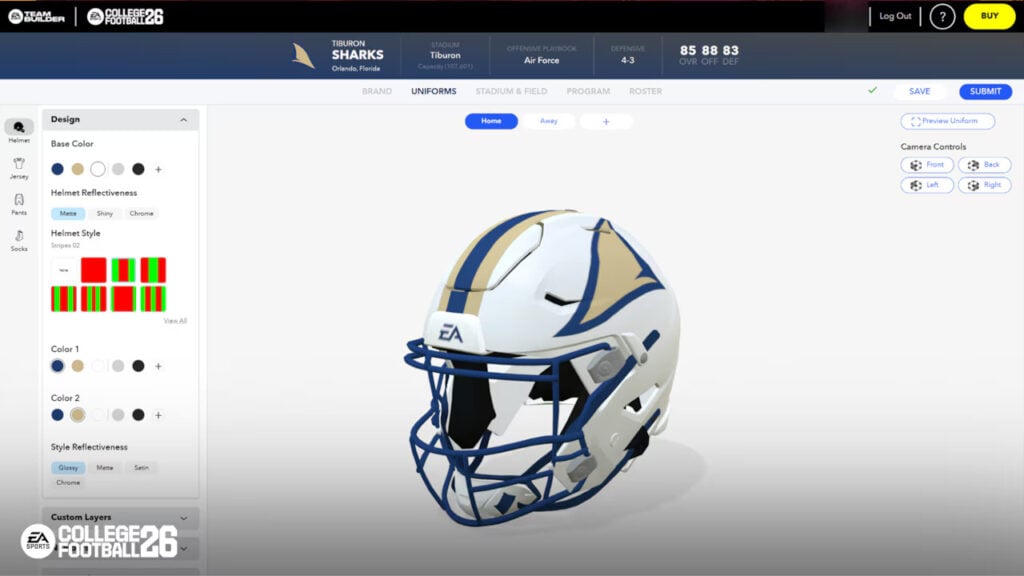
To start using the Team Builder in College Football 26, you’ll need to visit the official EA Sports College Football Team Builder web portal from a desktop browser. Mobile and tablet support is not fully optimized, so a PC or Mac is the safest option.
You’ll need to log in using your EA account credentials, which should match the account you use for the game on your console. Once logged in, you can create a new team from scratch or browse existing teams created by other players.
The interface is split into various tabs, such as Branding, Uniforms, Stadium, Program Details, and Roster. You can upload custom logos, design home and away jerseys, choose stadium size and theme, set your team’s strengths and rivalries, and manually edit every player’s name, appearance, and stats. When you’re satisfied, hit Submit to finalize your creation.
What are the uses of the Team Builder?
The Team Builder is an important tool for creating immersive experiences in College Football. There are plenty of options for using it. Whether you want to replace all the real NCAA teams with your creations in Dynasty mode or import your custom team in Road to Glory, this tool helps you accomplish that.
The feature also allows for community sharing, so you can download teams made by others, explore different rosters, or find your favorite fictional setups. It’s ideal for content creators, sim leagues, and players who love customization and storytelling.
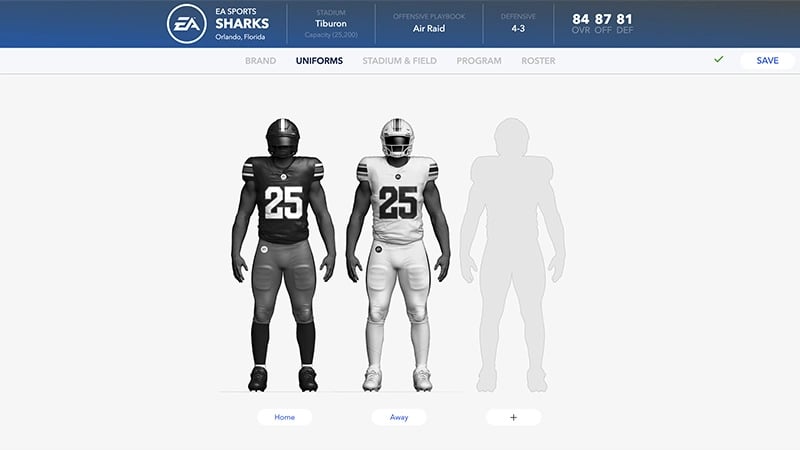
You need to follow a series of simple steps to import your team in College Football 26 from the Team Builder tool. However, before getting into that process, you should make sure that all the team modifications are set exactly to your choice before importing them into the game.
Here’s the step-by-step guide to importing your teams from the Team Builder:
- Launch College Football 26 and select the Create and Share tab on the main menu.
- Go into the Download Center from this tab and select the Schools category.
- Depending on your console, click the Triangle or Y hotkey to open the search option.
- In the search box, type the name of your saved team and press the X or A hotkey. This will download that specific team to your game files.
Once a team has been downloaded, it can be used in the Play Now, Dynasty, and Road to Glory game modes.
For more on College Football, check out our guides on all the new celebrations and features in this year’s edition.
E-Sports
Why Canada Could Be the Next Big eSports Hub in North America
What seems like a flashy turn on the screens and bellowing cauldrons of the arenas is not as large as it appears. The growing popularity of esports is made all the more here by the millions of fans, substantial investment, and infrastructure at long last beginning to keep pace with demand. What is going on? […]

What seems like a flashy turn on the screens and bellowing cauldrons of the arenas is not as large as it appears. The growing popularity of esports is made all the more here by the millions of fans, substantial investment, and infrastructure at long last beginning to keep pace with demand. What is going on? Well, let us take it line by line.
And as the spectators congregate in front of their monitors or squeeze into esports stadiums, this other culture is brewing behind the scenes, one to do with craft, community, and collective experience. Local breweries are turning into watch parties for limited releases with WHACK-a-mole in honor of icons of gaming, but beer quietly becomes part of the celebration. Home or away, watching the finals on TV or reading highlights in your local taproom, in both worlds, there exists a place with which to talk, relax, and enjoy being present.
Canada’s Growing eSports Ecosystem
Esports is booming in Canada, from Vancouver to Halifax. There are over 10 million gamers, with a third of them actively involved in tournaments as either spectators or participants. Festivals like DreamHack Montreal and EGLX Toronto consistently draw crowds. Against this backdrop, interest in new gaming experiences is also growing: more and more players are trying out Thimbles game casino. This is a fast-paced gambling game of skill and intuition, where guessing the right cup means seizing the moment and hitting the jackpot!
Cities Investing in Digital Arenas
Toronto has already invested over $500 million in digital infrastructure development, and some of this investment has gone toward creating specialized venues for eSports. One of them, Fan Expo Canada Gaming Arena, is not just a stage for major tournaments, but a magnet for teams from all over the world. Meanwhile, Vancouver is launching a 75,000-square-foot digital arena project right in the city center. It will be a multifunctional space for broadcasts, training, and competitions — from local to international. Around these developments, a growing number of breweries with the gaming world in mind are emerging, creating community spaces where fans can watch, play, and enjoy a pint in a uniquely immersive atmosphere.
But the story doesn’t end with buildings. Municipalities are increasingly collaborating with IT companies to finance youth tournaments and student leagues. All of this works in conjunction with mobile culture: thousands of fans have already switched to platforms like MelBet APK. This is a betting app with over 25,000 sporting events monthly, dozens of bonuses at the start, and a convenient replenishment system. Installation takes a couple of minutes, and for Canada’s mobile generation, this is already a familiar part of the gambling experience!
Talent Rising from Coast to Coast
A new generation of esports athletes is emerging across Canada. The country is no longer just watching the scene — it’s shaping it. And here are some of the names that are already rewriting the rules of the game:
- TenZ (Tyson Ngo): A Vancouver phenom who became a Valorant star with the Sentinels.
- Twistzz (Russell Van Dulken): A Toronto native and one of the most decorated CS: GO players, he now plays for FaZe Clan.
- Scarlett (Sasha Hostin): From Kingston, Ontario, she made history as one of the best female StarCraft II pros.
- MoistCr1TiKaL’s Canadian roster: The streamer’s organization has been banking on Canadian players in Rocket League — and it’s paying off, as the team is already dominating North America.
With a lineup of names like this, one thing is clear: Canada isn’t catching up — it’s pulling ahead.
A Culture That Embraces Innovation
Canada is confidently becoming one of the leaders of the digital economy among the G7 countries. Montreal and Toronto are no longer just cities, but real tech hubs where investments are being made in virtual production and real-time 3D gaming. The government is not lagging: over $1.4 billion has been allocated under the Canada Digital Adoption Program. Moreover, part of these funds are going exactly where life is currently in full swing — in game development and esports startups.
But it’s not just about finances. A lot is changing in people’s minds, too. More than 70% of Canadians aged 18 to 34 already perceive video games as a serious career, not just a hobby for teenagers. This shift is opening doors, especially in multicultural communities, where the digital industry often becomes the first chance to break through into creativity, into IT, into a new life. And as these digital spaces evolve, so do the places where ideas and ambitions come to life — from co-working lounges to casual meetups over craft beer, where the next big concept might be sketched out between rounds.
Schools and Startups Fueling the Scene
Canada’s academic and startup world isn’t sitting still either. Colleges and incubators across the country are launching programs focused on eSports development, management, and broadcasting. Just take a look:
| School/Startup | Location | Focus Area | Notable Feature |
| Durham College | Ontario | eSports Business Mgmt. | One of the first accredited programs |
| Northern Arena | Toronto | Tournament Production | Hosts pro-level events since 2016 |
| Q-Campus | Quebec | Game Development | Incubator partnered with Ubisoft |
| St. Clair College | Windsor, ON | Varsity eSports Program | Full scholarships + gaming facilities |
With education aligning with innovation, it’s not hard to see where things are heading.
Global Brands Looking North
Esports in Canada is no longer a niche hobby, but a steadily growing market that is attracting the attention of global brands. In 2023, heavyweights like Red Bull, Razer, and Intel sponsored tournaments in Montreal and Vancouver. Riot Games launched a separate Canadian Valorant league, giving local players their path to world championships. Even traditional sports channels TSN and Sportsnet, which have mainly broadcast hockey for decades, have started airing esports during peak hours.
Investors are not slow in their steps. Toronto-based OverActive Media, which owns teams in the Overwatch League and Call of Duty League, recently closed a round of investment worth more than 60 million Canadian dollars. This is not just an infusion; it is a vote for the future of Canadian esports. At the same time, Bell Media is developing partnerships to broadcast tournaments across the country. The goal is straightforward: to expand the reach and transform a local hobby into a national phenomenon.
Where Passion Meets Possibility
The future of esports in Canada is blazing. Players, cities, and brands are all in. And it’s not just hype. Every broadcast, every tournament, every new arena is a building block for something much bigger. The passion is there. The question is: how high can Canada go?
As the scene rises, so does the culture around it—even if that’s local pub streaming finals, breweries crafting event-night specials, or fans gathering over pints to watch their favorite teams compete. It’s a shared energy that spans across screens and taprooms, turning competition into community.
E-Sports
iGaming news | Betclic strengthens French sporting connection with two new partnerships
Banijay Gaming operator Betclic has struck two new sporting partnerships in France amid the renewal of two others. The new partnerships are with the French Handball Federation – running until 2028 – and the Arkema Première Ligue (APL), the top division of women’s football in France. Betclic has renewed existing collaborations with the French Volleyball […]

Banijay Gaming operator Betclic has struck two new sporting partnerships in France amid the renewal of two others.
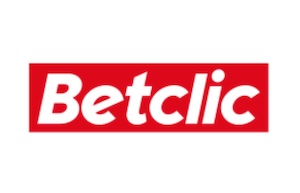
The new partnerships are with the French Handball Federation – running until 2028 – and the Arkema Première Ligue (APL), the top division of women’s football in France.
Betclic has renewed existing collaborations with the French Volleyball Federation and the Ligue Nationale de Rugby for the Top 14 competition.
Betclic said handball is now the eighth most bet on sport on its app, with the Arkema Première Ligue the most popular national women’s competition.
The extension with the French Volleyball Federation for another four seasons, until 2028, comes as the sport ranks sixth for most bets on the Betclic app, the operator said.
Excluding major sports, the 2024 Olympic final between France and Poland was Betclic’s second most bet-on event of the Games, with more than 15 per cent of players now betting on the sport.
Betclic said one in every two bettors on its app places wagers on rugby, amid the renewal with Ligue Nationale de Rugby and the Top 14 competition, which lasts until 2027.
Nicolas Béraud, founder and CEO of Betclic, said: “French volleyball is experiencing a silent but spectacular
revolution, and we are proud to support this beautiful adventure. By partnering again with FFVolley, Betclic reaffirms its lasting commitment alongside a federation in full momentum, driven by historic results and an ambitious vision for the 2028 Olympics.”
Of the partnership with the APL, he said: “The APL is a reference championship, where clubs that matter in major competitions compete. We want to be where sport is advancing, where audiences are evolving, where passions are growing.
“Women’s football ticks all the boxes, and we are proud to contribute to its development alongside Jean-Michel Aulas (President of the Ligue Féminine du Football Professionnel and Philippe Diallo [president of the FFF].”
E-Sports
Esports explained: What it is and why everyone’s talking about it
Esports explained: What it is and why everyone’s talking about it – Squamish Chief […]
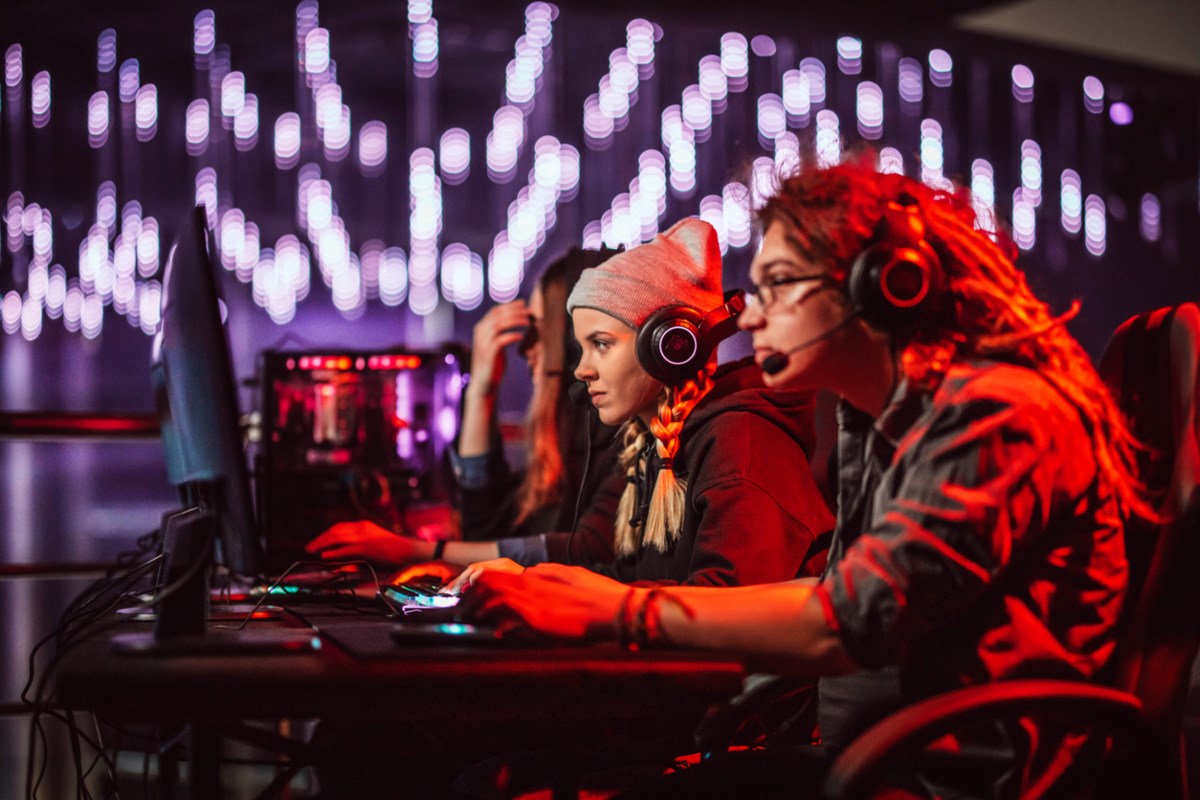
Skip to content
E-Sports
Super League Partners with Advertising Week to Launch First Gaming Summit at AWNewYork 2025
~ The half-day forum will spotlight the future of playable media, brand innovation and next-gen consumer engagement ~ SANTA MONICA, Calif., July 17, 2025 (GLOBE NEWSWIRE) — Super League (Nasdaq: SLE), a leader in engaging audiences through playable media, content, and experiences within mobile games and the world’s largest immersive platforms, has joined forces with […]

~ The half-day forum will spotlight the future of playable media, brand innovation and next-gen consumer engagement ~
SANTA MONICA, Calif., July 17, 2025 (GLOBE NEWSWIRE) — Super League (Nasdaq: SLE), a leader in engaging audiences through playable media, content, and experiences within mobile games and the world’s largest immersive platforms, has joined forces with Advertising Week to co-present the first-ever Gaming Summit at Advertising Week New York 2025, taking place October 6–9 in The Penn District.
A recent report by Dentsu highlights that the worldwide audience of people who play video games is now 3.5 billion in size, yet only 5% of advertising spend is deployed to engage them. The Gaming Summit at AWNewYork 2025 is Advertising Week’s first dedicated forum to showcase the value, effectiveness, and scale available within this underappreciated sector. To ensure the content directly addresses how brands can drive real results in gaming, Advertising Week has partnered with Super League to curate an expert advisory panel of marketers, creators, and gaming platform leads to advise on content.
Starting Oct 7th at 2:30pm ET, the Summit will be a high-energy, insights-packed event built to demystify gaming for marketers and provide a tactical blueprint for brand success across immersive platforms like Roblox, Fortnite, Minecraft, mobile games, and more.
The Summit program includes sessions such as:
-
What Gamers Want (and Don’t) From Brands
– Audience-first insights for campaign success -
The Gaming Media Mix
– How gaming fits into social, CTV, and digital strategies -
Beyond the Build
– How to layer gaming into full-funnel marketing plans, from awareness to consideration to performance to measurable results -
The Gaming Landscape Decoded
– From UGC and esports to mobile and AI
“This is the moment for gaming to have its seat at the main stage of advertising, and we’re proud to help make that happen,” said Rhiannon Apple, SVP, Client Services at Super League. “Marketers are done asking if they should be in gaming. Now they want to know how to win, and this Summit is where they’ll get the answers.”
As the Presenting Sponsor, Super League will also co-host programming with Advertising Week and participate in activations throughout the event, including strategic networking opportunities and an exclusive VIP gathering designed to foster collaboration between top brands, creators, and gaming platforms.
“We’re thrilled to partner with Super League on the Gaming Summit,” said Lance Pillersdorf, founder of Advertising Week. “We know this innovative area offers so much value to marketers, and we’re going to give them everything they need to get involved.”
For brands looking to reach audiences who play
, the AWNewYork Gaming Summit will provide actionable insights, direct access to decision-makers, and lead-generation opportunities in a category that’s shaping the future of media, entertainment, and culture.
About Super League
Super League (Nasdaq:SLE) is redefining how brands connect with consumers through the power of playable media. Super League provides global brands with ads, content, and experiences that are not only seen – they’re played, felt, and remembered, within mobile games and on the world’s largest immersive gaming platforms. Powered by proprietary technology, an award-winning development studio, and a vast network of native creators, Super League is a one-of-a-kind partner for brands looking to stand out in culture, spark loyalty, and drive meaningful impact. In a world where attention is earned, Super League makes brands relevant by making them playable.
About Advertising Week
Advertising Week is a global gathering of marketing, advertising, technology, and brand professionals. It offers weeks of thought leadership, networking and special events, focusing on key industry conversations and trends. Advertising Week events are held in major cities worldwide, including London, New York, Tokyo and Mexico City. You can find out more information at AdvertisingWeek.com.
Forward-Looking Statements
The foregoing material may contain “forward-looking statements” within the meaning of Section 27A of the Securities Act of 1933 and Section 21E of the Securities Exchange Act of 1934, each as amended. Forward-looking statements include all statements that do not relate solely to historical or current facts, including without limitation statements regarding the Company’s product development and business prospects, and can be identified by the use of words such as “may,” “will,” “expect,” “project,” “estimate,” “anticipate,” “plan,” “believe,” “potential,” “should,” “continue” or the negative versions of those words or other comparable words. Forward-looking statements are not guarantees of future actions or performance. These forward-looking statements are based on information currently available to the Company and its current plans or expectations and are subject to a number of risks and uncertainties that could significantly affect current plans. These risks and uncertainties include, without limitation, risks and uncertainties related to the future price of our Common Stock, the Company’s ability to adequately deploy the funds received in the financings; the impacts of the debt conversions on the Company’s balance sheet; market conditions; the Company’s ability to maintain adequate liquidity and financing sources; various risks related to the Company’s business operations; and other risks and uncertainties, including those described within the section entitled “Risk Factors” in the Company’s Annual Report on Form 10-K for the year ended December 31, 2024, and the Company’s Quarterly Report on Form 10-Q for the quarter ended March 31, 2025. There can be no assurance that the Company will be able to maintain compliance with the NCM’s continued listing standards. Should one or more of these risks or uncertainties materialize, or the underlying assumptions prove incorrect, actual results may differ significantly from those anticipated, believed, estimated, expected, intended, or planned. Although the Company believes that the expectations reflected in the forward-looking statements are reasonable, the Company cannot guarantee future results, performance, or achievements. Except as required by applicable law, including the security laws of the United States, the Company does not intend to update any of the forward-looking statements to conform these statements to actual results.
Media Contact:
[email protected]
A photo accompanying this announcement is available at
https://www.globenewswire.com/NewsRoom/AttachmentNg/9fd560e2-31be-4065-8b43-4f5a635eb64b
E-Sports
College Football 26 Dynasty Mode Receives First Update
This past week has been all first for College Football 26 as EA Sports makes big updates to the game. Thursday morning, the servers were down for maintenance, so all online modes and Team Builder were unavailable. Part of those updates also saw changes made to Dynasty Mode. This is the first time since the […]

This past week has been all first for College Football 26 as EA Sports makes big updates to the game.
Thursday morning, the servers were down for maintenance, so all online modes and Team Builder were unavailable. Part of those updates also saw changes made to Dynasty Mode. This is the first time since the game’s release last week that the mode is seeing an update.
Calling all #CFB26 Dynasty fans!
Dynasty mode has received some tuning and fixes around Position Changes and Skill Caps following server maintenance earlier today!
Full details: https://t.co/MwOjQdTzwd
— CFBDirect (@CFBDirect) July 17, 2025
Some of the updates introduced with Dynasty Mode include skill caps, position changes, coach points, and additional features. Here’s a look at everything that got updated with the game mode:
Related Article: College Football 26 Server Status – July 17 Maintenance
Player’s positions can change in Dynasty Mode without any penalty being applied to their skill caps. The following position groups are available to be switched within the groupings:
Recruits who are classified with the “Athlete” position can set their initial position without it impacting the player’s skill group caps.
The way new skill caps work for players will depend on their development trait and school classification. Younger players will have higher skill caps at their new positions since they are still young and have more years of eligibility.
Related Article: How Passing Works in College Football 26: Everything You Need to Know
Coach Points were updated in the mode. Gamers were exploiting it as they were able to retire and create a new character to use those points. The game has addressed this, as players won’t be able to use it in that capacity.
There is also another update, as the impact of the Reach Your Potential ability (Motivator Tier 1) has been reduced to improve coaching ability and recruiting balance. They did leave a note that it will affect the influence given to recruits when the player hits a skill group cap at their position.
These changes will only affect online Dynasty files. Those that have already been created will have these updates included. The changes will be coming to offline Dynasty files in the future.
Those playing online Dynasty Mode saved files will be happy to see the small updates to it. There have been complaints of other issues within Dynasty Mode that were not addressed in this update, including the mode crashing randomly.
These changes will help prevent gamers from being penalized for moving their players’ positions, as depth can be an issue if the recruiting season doesn’t go well. Coach Points and abilities leveling up will be more balanced and make it more realistic, as it should be.
Related Article: First College Football 26 Update Focuses on Road to Glory and Gameplay
-

 Motorsports2 weeks ago
Motorsports2 weeks agoWhy Cosmetics are Making Up for Lost Time in Women’s Sports
-

 Motorsports2 weeks ago
Motorsports2 weeks agoTeam Penske names new leadership
-

 Youtube2 weeks ago
Youtube2 weeks ago🚨 BREAKING: NBA MVP Shai Gilgeous-Alexander signs the RICHEST annual salary in league history
-

 Sports1 week ago
Sports1 week agoNew 'Bosch' spin
-

 Sports1 day ago
Sports1 day agoVolleyball Releases 2025 Schedule – Niagara University Athletics
-

 Sports2 weeks ago
Sports2 weeks agoE.l.f Cosmetics Builds Sports Marketing Game Plan Toward Bigger Goals
-

 College Sports2 weeks ago
College Sports2 weeks agoMSU Hockey News – The Only Colors
-

 College Sports5 days ago
College Sports5 days agoBuford DB Tyriq Green Commits to Georgia
-

 Fashion3 weeks ago
Fashion3 weeks agoUSA vs. Ireland FREE LIVE STREAM (6/29/25)
-
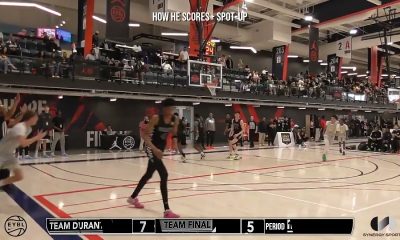
 College Sports3 weeks ago
College Sports3 weeks agoIU basketball recruiting





























